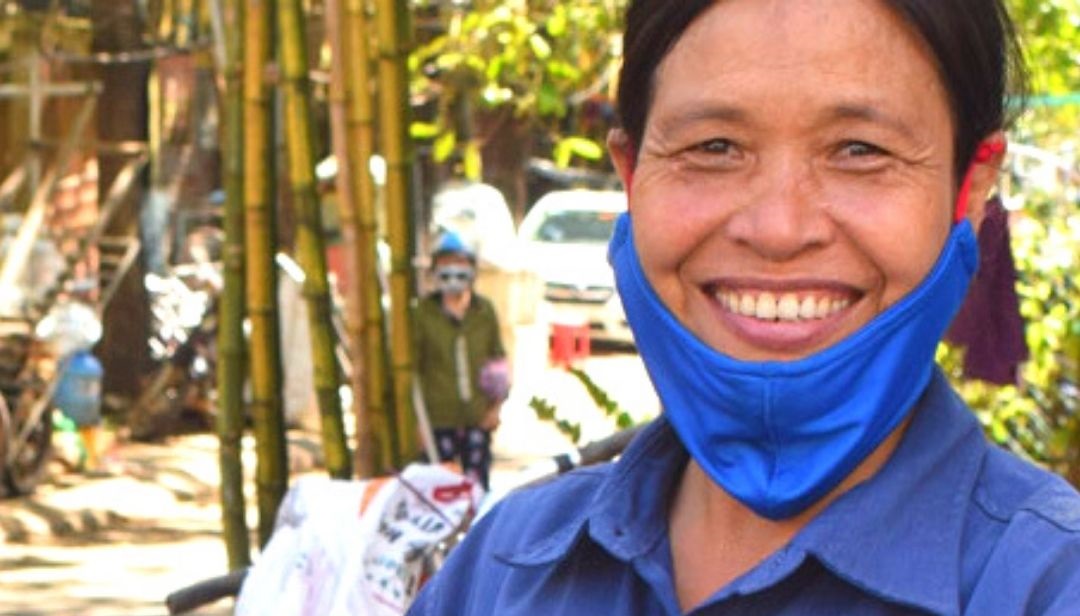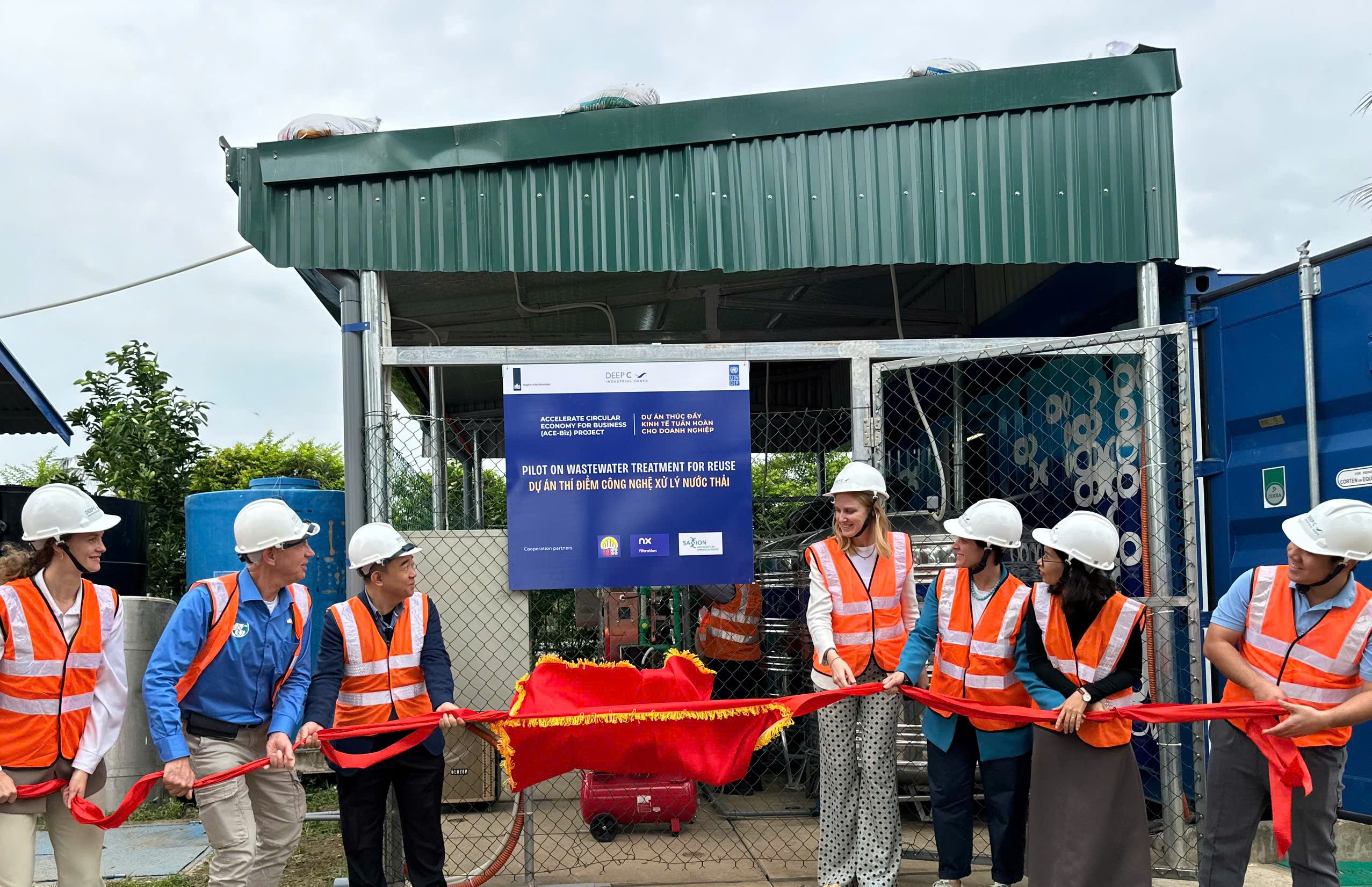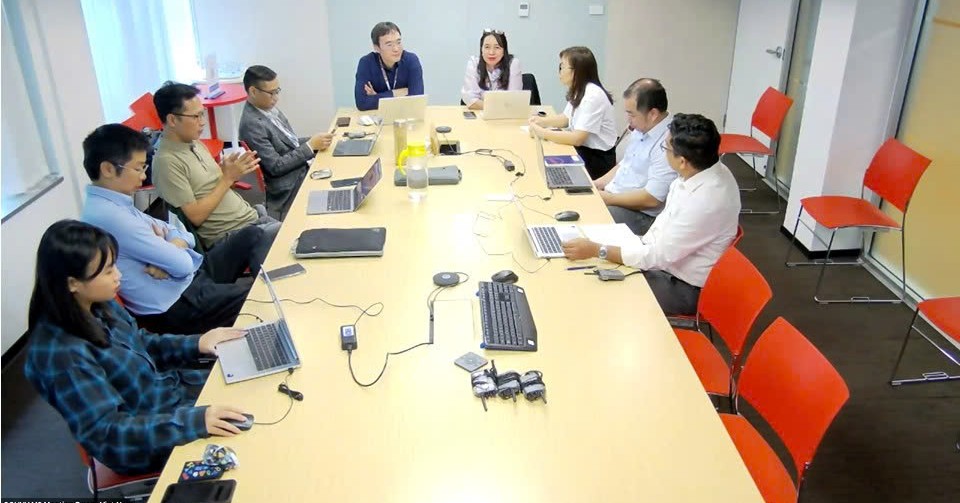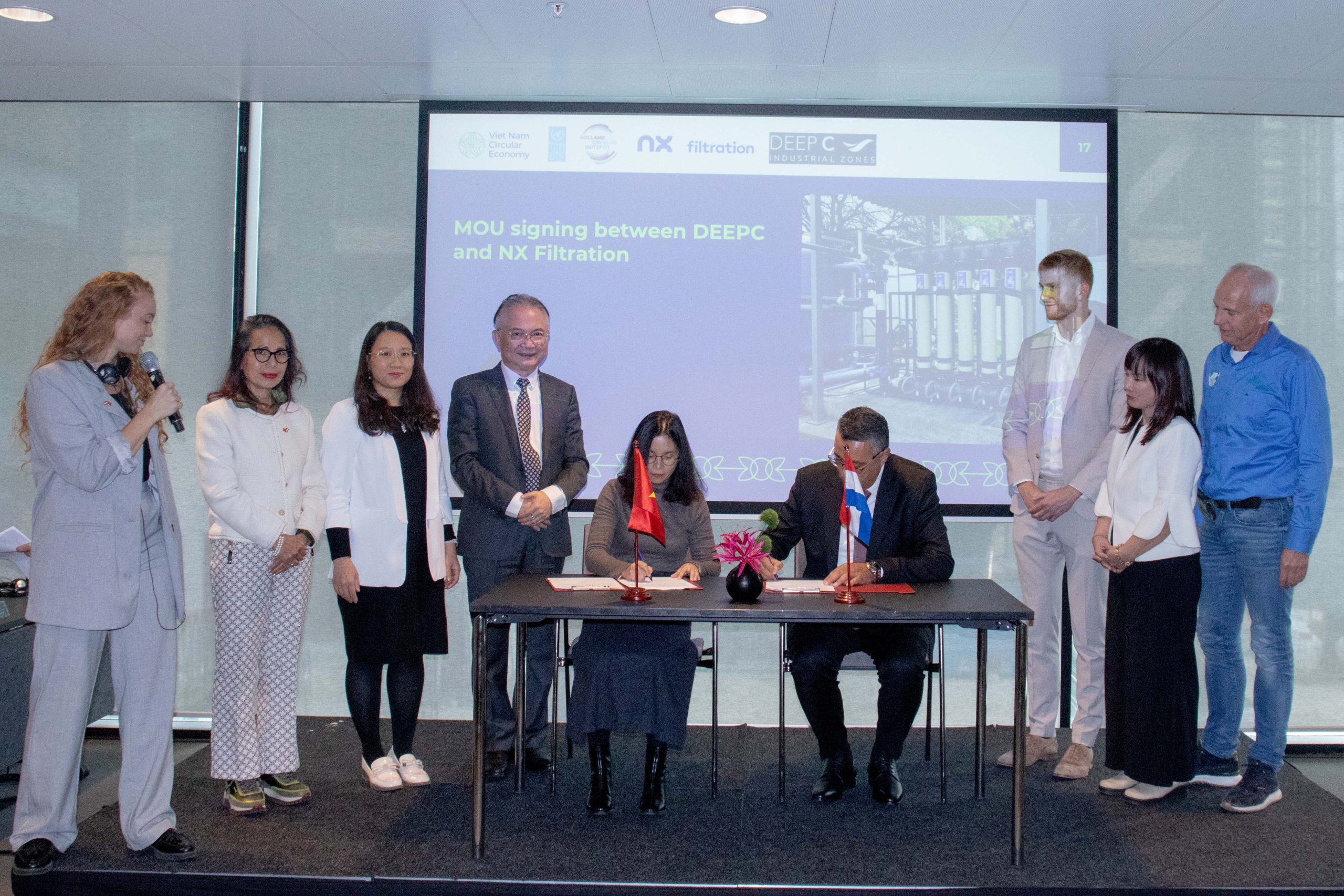On November 27th, with support from the United Nations Development Programme (UNDP) Vietnam, the Quy Nhon People’s Committee collaborated with the Binh Dinh Fisheries Department, the Management Board of Binh Dinh Fishing Port, and Binh Dinh Environment Joint Stock Company to organize a series of events.
The purpose of these events was to launch waste management models in the fisheries industry. This included the handover of a warehouse and equipment to support the collection and transportation of plastic waste, as well as the introduction and connection of the Material Recovery Facility (MRF) with the informal workforce. Representatives from various departments, socio-political organizations, research institutions, universities, businesses, scrap yards, informal waste workers, and fishermen attended these events.
During the activity “Fishing vessels bringing on-board waste back to shore” launching ceremony, 200 fishing vessels from Quy Nhon Fishing Port received equipment to support the collection of plastic waste during each sea trip. The Management Board of Quy Nhon Fishing Port and the port’s plastic waste collection team were handed over a warehouse and equipment, including presses, garbage carts, trash cans, garbage baskets, and workwear. At the inauguration of the plastic waste collection warehouse for fishing vessels, both the Management Board of Quy Nhon Fishing Port and seafarers expressed their interest and commitment to participating in the activity.
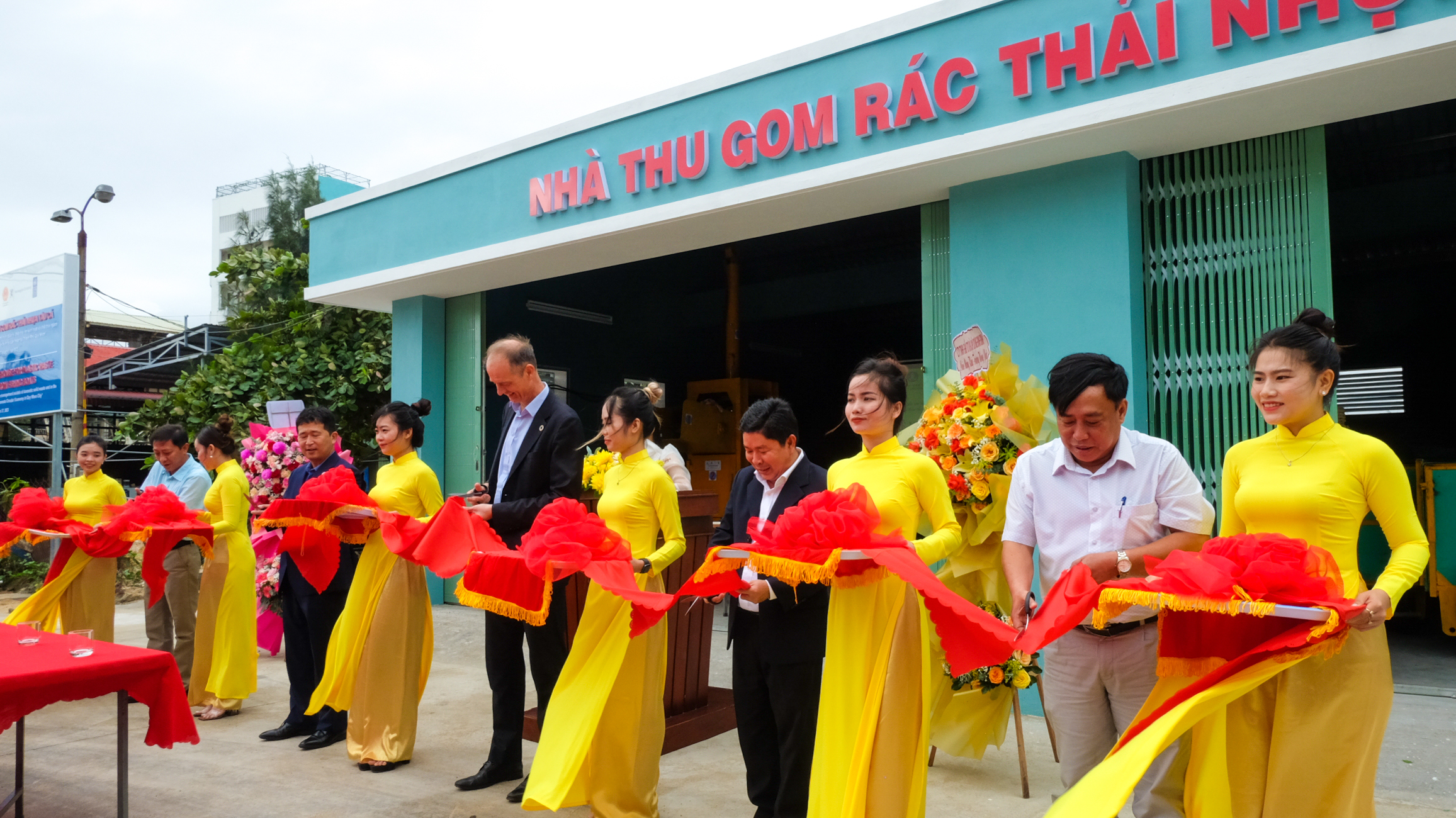
Ribbon-cutting ceremony for the inauguration of the warehouse at the fishing port
This initiative has garnered attention from management agencies and the community, with expectations of reducing ocean plastic pollution and deriving economic benefits through the recycling of plastic scrap from fishing vessels. The events also featured the introduction of the MRF operating model and the launch of the Informal Labour Club, aiming to connect and encourage the participation of these workers in the network for collecting and supplying plastic inputs to the MRF.
The MRF is anticipated to have a capacity of 2-4 tons per day, with plastic input sources from various locations such as fishing ports, seaports, restaurants, supermarkets, hotels, schools, and residential areas. Additionally, the signing ceremony for cooperation with two hotels and three scrap yards marked their entry into MRF’s partner network, forming a plastic scrap value chain in Quy Nhon city.
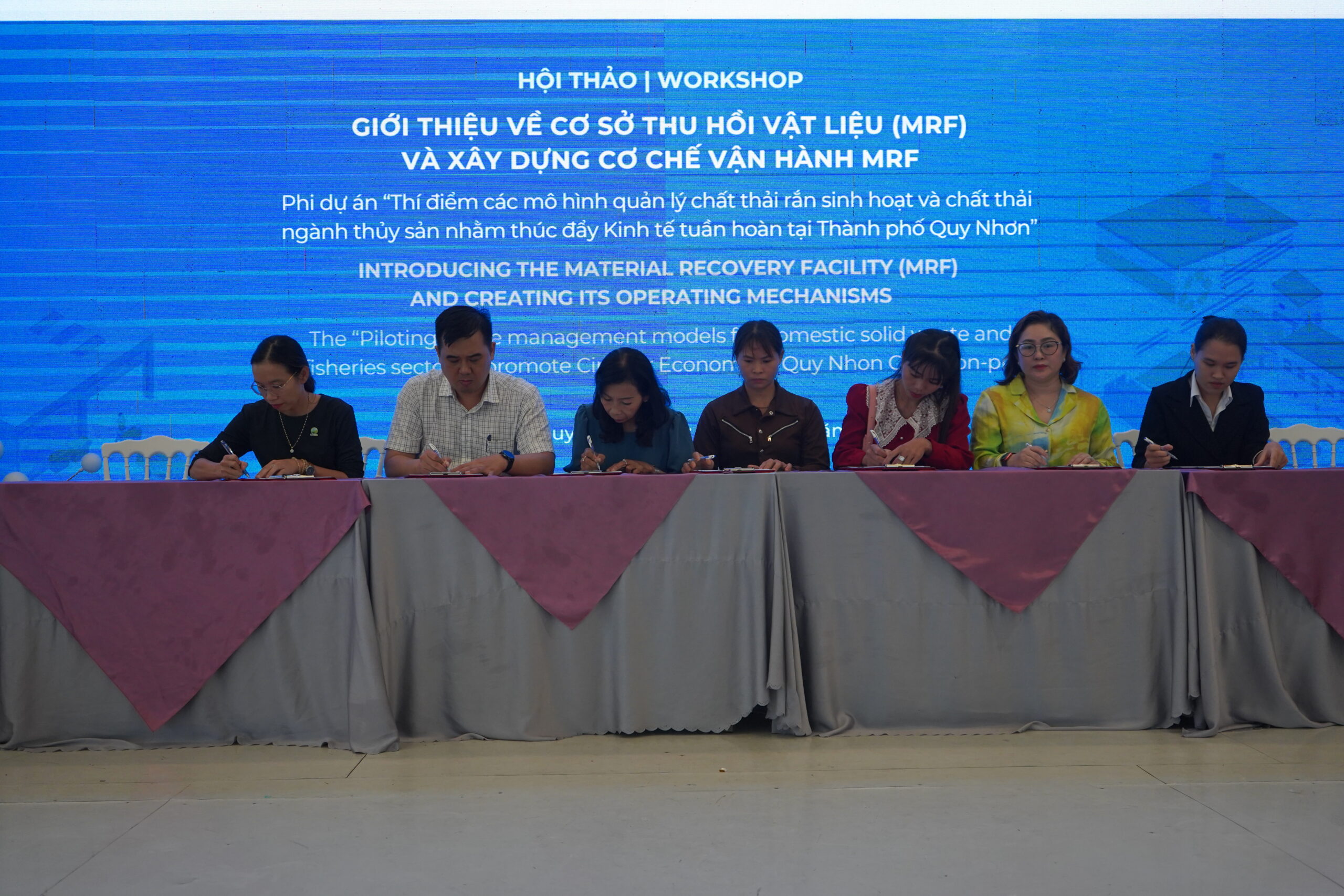
Signing ceremony for the collaboration between Binh Dinh Joint Stock Company and restaurants and scrap yards
To support the collection and transportation of plastic scrap, the Japanese government provided assistance in the form of four specialized waste collection electric trucks, handed over to the Quy Nhon City People’s Committee. These trucks are expected to play a crucial role in establishing green routes for transporting plastic waste, contributing to Quy Nhon city’s transition towards a circular economy with low emissions.
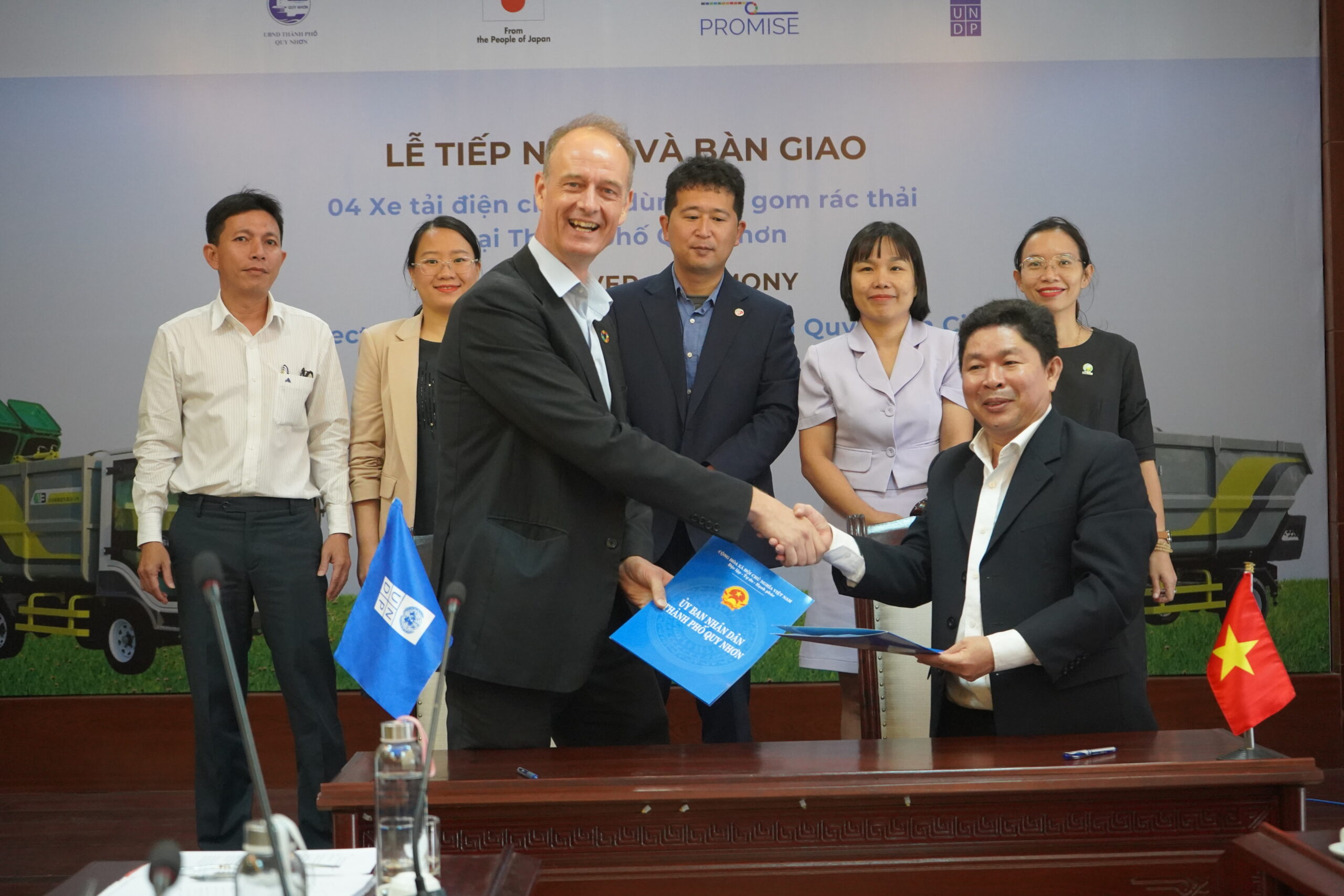
Handover ceremony of electric waste collection trucks to the People’s Committee of Quy Nhon City
Mr. Patrick Haverman, Deputy Resident Representative of UNDP Vietnam, highlighted that, on average, 100 fishing vessels at Quy Nhon Fishing Port generate about 1.97 tons of plastic waste per month. Therefore, the “Fishing vessels bringing on-board waste back to shore” program aims to raise awareness among fishermen about the environmental and health risks posed by plastic waste. It also seeks to create livelihoods for informal workers at fishing ports and promote the institutionalization of regulations on collecting plastic waste from fishing vessels. Given that Quy Nhon city generates over 80 tons of plastic scrap daily, the MRF model in Quy Nhon has the potential to expand its capacity to 5-10 tons per day. The success and replication of this model depend on collective action by regulators, the informal labor sector, and recycling units.
Vice Chairman of Quy Nhon City People’s Committee, Mr. Nguyen Duc Toan, noted that despite being honored as one of three cities in Vietnam to receive the title of ASEAN Tourism City 2020, Quy Nhon city faces environmental pollution due to household waste, especially persistent plastic waste entering the ocean. The project’s solutions aim to effectively manage domestic waste, minimize plastic waste generation into the environment, support waste classification at the source, ensure environmental protection, and contribute to the city’s image as a green city, thereby maintaining the title of an ASEAN clean tourism city.









